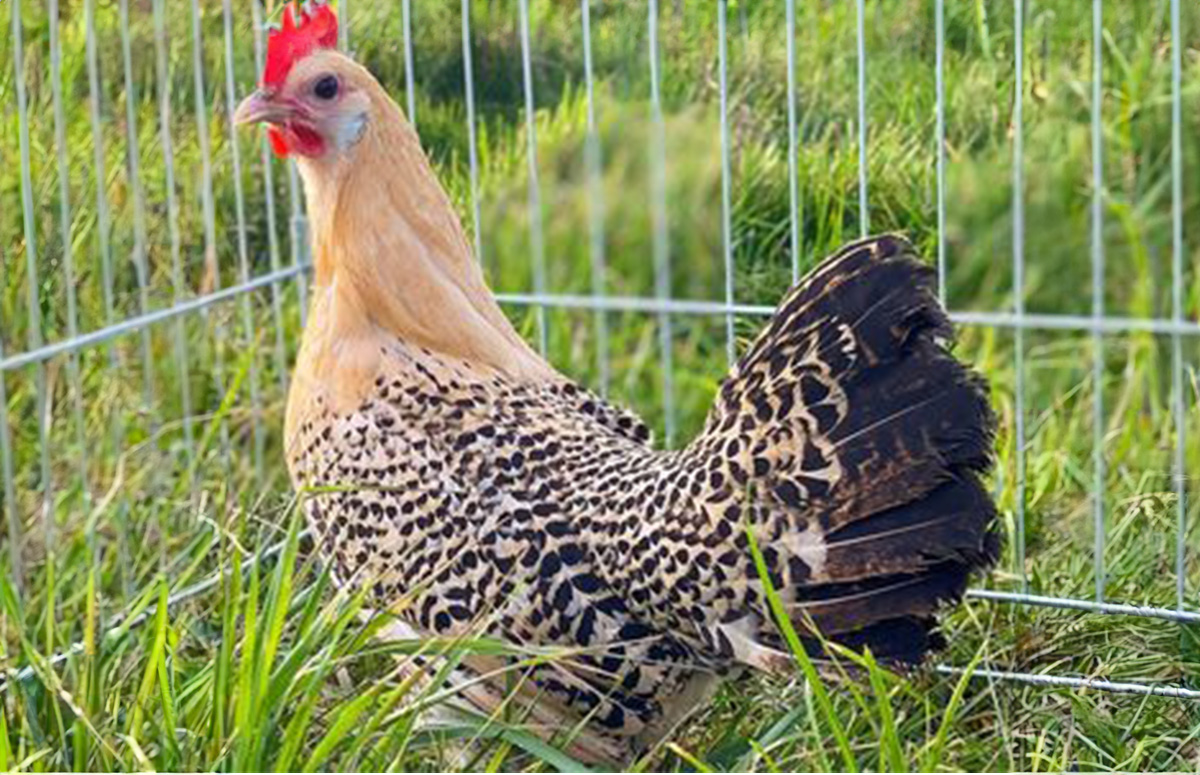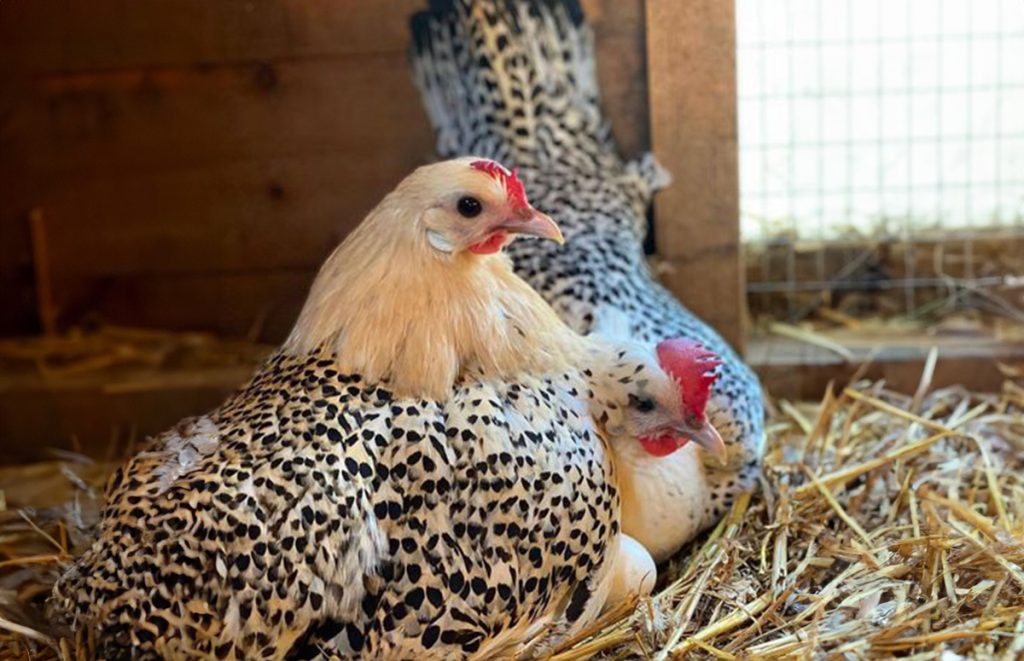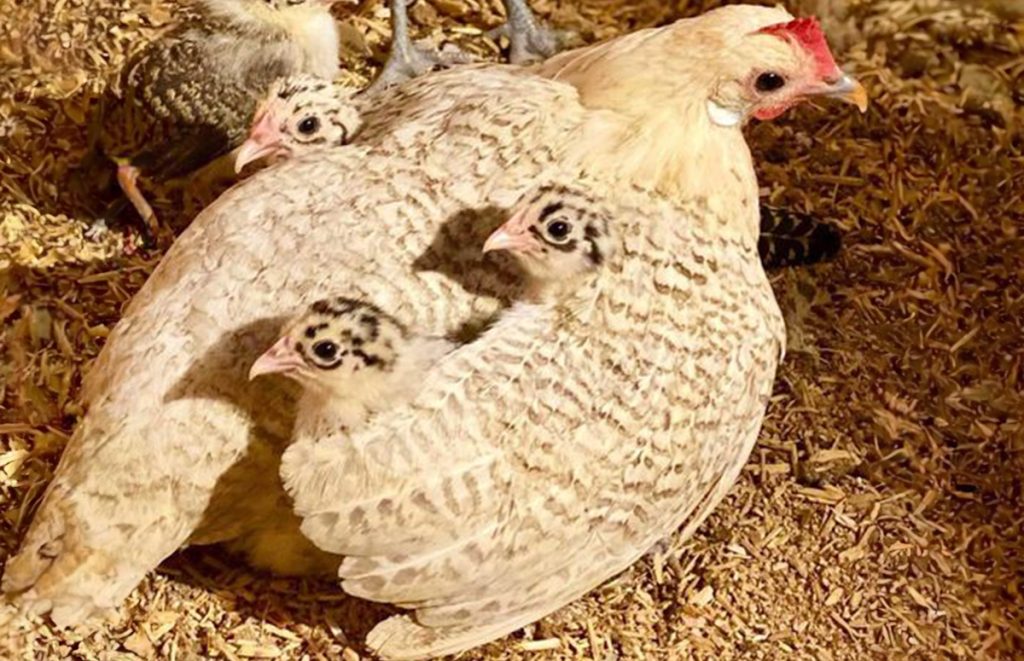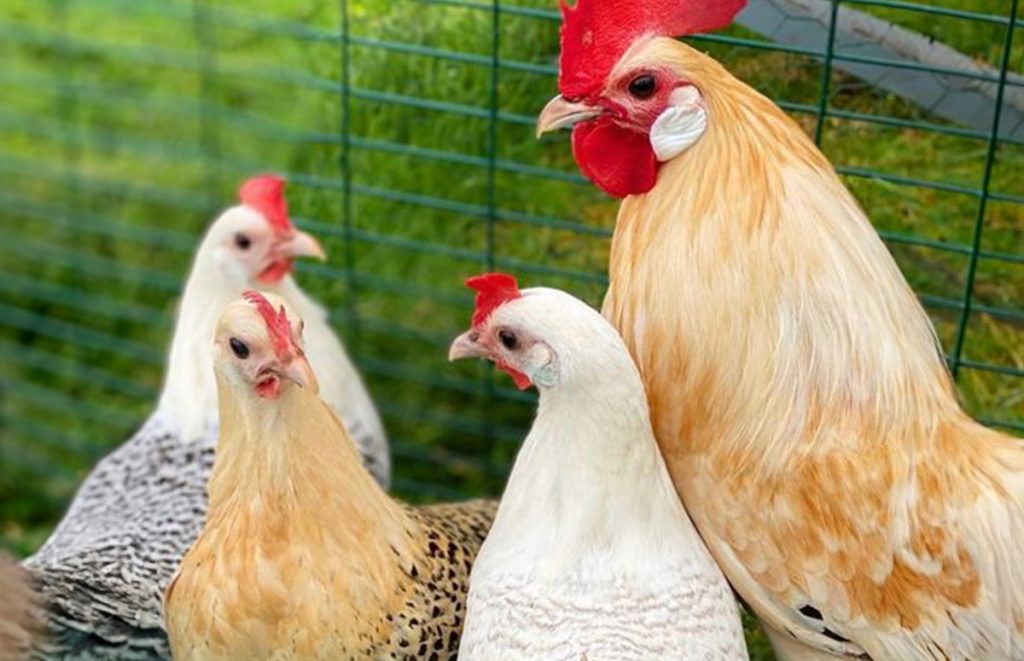Groninger Meeuw Chicken: A Rare Dutch Beauty

Originating from the Dutch province of Groningen, the Groninger Meeuw chicken is an amazingly rare gem in the poultry world. Let’s discover this remarkable breed’s fascinating characteristics and rich history as we delve into its origins and exceptional qualities.
- Groninger Meeuw hens lay between 150 – 200 eggs yearly
- Unique feather pattern
- Active and flighty
- Originating in The Netherlands
| Eggs | 150-200 eggs yearly |
| Egg Color | White |
| Egg Size | Small to medium |
| Weight | 3.5 – 4 lbs |
| Hardiness | Cold |
| Temperament | Active |
| Beginner-friendly | Yes |
| Color | Gold, Silver (and Lemon for Bantams) |
Characteristics
The Groninger Meeuw, ‘meeuw’ meaning gull in Dutch, exhibits a unique look. As a ‘pelhoen’ or barred poultry breed, their feathers are decorated with a remarkable pattern. Each feather features black spots on both sides of the feather shaft, creating an appealing effect.
The breed showcases three color varieties, gold and silver for the large fowl and the bantam variety also includes lemon. These color variations, combined with their unique feather pattern, lend an eye-catching appearance to the Groninger Meeuw.

Other notable physical traits include dark brown eyes and a slightly falling crest heel in hens. These charming chickens are known for their lively nature and excellent flying abilities, making them well-suited for free-ranging.
Egg Production
The Groninger Meeuw pullets start laying at an early age, usually around five months. Despite being a relatively rare breed, they exhibit good egg-laying capabilities and produce around 150-200 eggs yearly.
The eggs of the Groninger Meeuw are relatively small-sized the first year, but tend to get a bit bigger in the second year of laying. They are not a broody breed and seldom hatch eggs, but when they do, they have proved to be excellent mothers to their chicks.

Personality
The Groninger Meeuw boasts a lively personality that adds charm to any flock. These chickens are known for their active nature and enjoy exploring their surroundings.
Groninger Meeuw chickens have a natural preference for free-ranging and feel right at home in open spaces. They can be flighty sometimes. This adventurous nature makes less suited for smaller pens or suburban neighborhoods.
Groninger Meeuw Breed History
The history of the Groninger Meeuw is an intriguing tale. Originating in the Dutch province of Groningen during the late 19th century, this breed emerged from a combination of brown-eyed barred poultry and the East Frisian Meeuw.
At the end of the 19th century, R. Houwink reported the presence of a larger landfowl in the city of Groningen. This landfowl, known locally as “Maifies,” was larger than the Frisian and Drenthe fowl prevalent in the region at the time.

However, the Groninger Meeuw faced challenges from foreign breeds, such as the Leghorn, which led to a decline in their population.
The breed’s recognition and official standardization came in 1919, determining its place as a recognized breed. Despite this recognition, the Groninger Meeuw remained rare.
Over time, efforts were made to preserve and revive the breed, but up to now, the breed remains uncommon and rare.
Summary
The Groninger Meeuw chicken, originating from the Dutch province of Groningen, is a remarkable rare breed. With its distinctive ‘pelhoen’ or pencilled feather pattern, featuring black spots on each side of the feather shaft, it captures attention.
Groninger Meeuw chickens are known for their active personalities, enjoying free-ranging and excellent flying abilities. They are early layers of white-shelled eggs, with hens proving to be excellent mothers when they go broody.
To learn more about chicken breeds, check out our ‘Chicken Breeds Page‘ to see every specific breed we address. Or go to our listicle breed summary on ‘The Classroom‘, or, if you’re unsure where to start, take a look at our ‘Chicken Breeds: Ultimate Beginners Guide‘.
Credits Featured Image: @hensonoxney (IG)






















